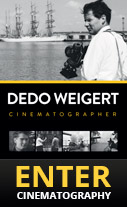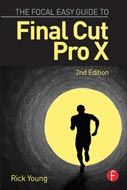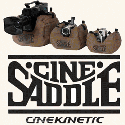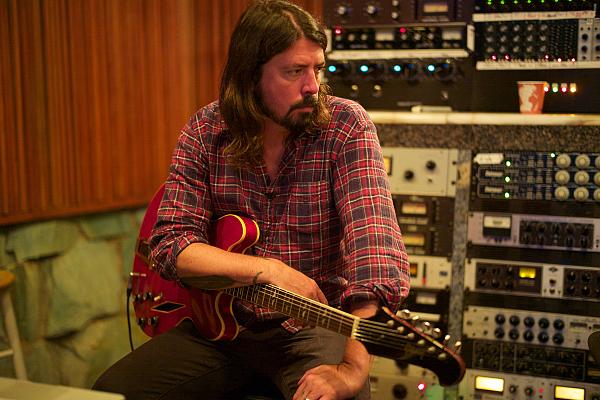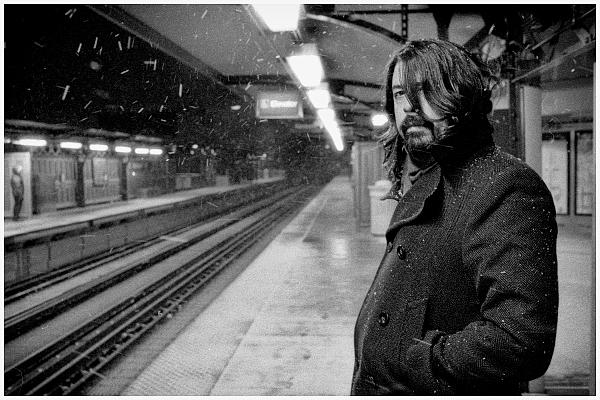Blackmagic Design has announced that several Pocket Cinema Cameras were used to shoot behind the scenes footage and B roll for the Foo Fighters eight part Sonic Highways series for HBO. Blackmagic Designs HyperDeck Studio Pro SSD recorders and Teranex 2D Processor were also used as the backbone for the mobile production unit.
Directed by Dave Grohl, each of Sonic Highways one hour episodes is devoted to a different musical landmark, chronicling the unique history, cultural environment and people that define a city, including local legends. With episodes set in (in alphabetical order) Austin, Chicago, Los Angeles, Nashville, New Orleans, New York, Seattle and Washington, D.C., the series airs Fridays at 11:00pm ET/PT on HBO starting October 17.
Directed by Dave Grohl, each of Sonic Highways one hour episodes is devoted to a different musical landmark, chronicling the unique history, cultural environment and people that define a city, including local legends. With episodes set in (in alphabetical order) Austin, Chicago, Los Angeles, Nashville, New Orleans, New York, Seattle and Washington, D.C., the series airs Fridays at 11:00pm ET/PT on HBO starting October 17.
Above: Dave Grohl with guitar in studio
Photographer: Andrew Stuart
Photographer: Andrew Stuart
Above: Dave Grohl on subway platform
Photographer: Kenny Stoff
Photographer: Kenny Stoff
Executive Producers James A. Rota, Roswell Films, and John Ramsay, Therapy Studios, oversaw all technical aspects of the production, which required a mobile, reliable and easy to use workflow to capture more than 480 hours of recordings, performances, interviews and behind the scenes footage.
“In turning 20 years old, the band wanted to do something special, and they have,” said James. “They didn’t just fly around to different cities to record music. They went to iconic locations that have significance to the musical fabric of America, and those places inspired the album. Sometimes we were in a recording studio and sometimes we built a recording studio in a venue, such as Preservation Hall in New Orleans. Each location was a little different, and we wanted to document that process too.”
“The concept around using the Pocket Cinema Cameras was anyone, a band member, gaffer, me or John for example, could pick one up and shoot if they saw something interesting happening. Because of the compact form factor, it was a great grab and go camera that still provided a really nice image,” he continued.
“By recording the album this way, it pulls back the curtain so you can see the band write and record the music. Its a special opportunity as a fan to be able to watch the creative process,” said John. “The locations werent always the easiest places to record music in, but it was incredibly easy for us to set up cameras for static shots, plug them into the HyperDecks, put in the SSDs and have them record all day.”
Six HyperDeck Studio Pros were dispersed among six flypacks, which were placed near static cameras set up around the venue to capture the action from all angles. The camera feeds were sent via HDMI and SDI directly into the HyperDeck Studio Pros, which have dual SSD recording slots for continuous recording.
With the HyperDecks, we could record in DNxHD, which saved time on transcoding, as well as playback footage if needed, jam it with timecodes and basically set it and forget it all day. It was like having a never ending tape machine, said James. We would set the packs down near the cameras like little stations and when finished, carry them down to the truck and move on. At the end of the day, we would hand off the drives to the DIT, who would send the media back to L.A. for post, and bam you have the majority of your basic footage.
“When the band wanted to do an impromptu performance in D.C., instead of having to hire a mobile truck, we could throw the camera and HyperDeck setup together and record a live performance on the fly,” said John. “It really allowed us to have a flexible, smaller, tighter crew instead of having to rent a big crew and deal with a complicated workflow.”
The DIT used a MultiDock Thunderbolt based disk dock to back up and manage the media, and a Teranex 2D Processor standards and format converter was also used in conjunction with one of the HyperDeck Studio Pros to record in the frame rate needed, as well as to smooth out any cadence issues.
“Teranex was great because we could record in whatever frame rate we needed, and when we started cutting episodes in post, we also used Teranex for the archival footage to get the formats and frame rates needed. We also used a few UltraStudio Express and Intensity Extreme devices for capture and playback, said James. Blackmagic Design has tools that are helpful and solutions for people who are actually doing the work.”
“The documentary process really became part of the music, and any production issues would have affected the album,” said John. “But we didn’t have to worry about anything. Blackmagic Design makes end to end solutions and workflows that are very easy to use and very efficient. Anytime you think of a widget you need, Blackmagic Design has it, and it works well and is affordable.”
“In turning 20 years old, the band wanted to do something special, and they have,” said James. “They didn’t just fly around to different cities to record music. They went to iconic locations that have significance to the musical fabric of America, and those places inspired the album. Sometimes we were in a recording studio and sometimes we built a recording studio in a venue, such as Preservation Hall in New Orleans. Each location was a little different, and we wanted to document that process too.”
“The concept around using the Pocket Cinema Cameras was anyone, a band member, gaffer, me or John for example, could pick one up and shoot if they saw something interesting happening. Because of the compact form factor, it was a great grab and go camera that still provided a really nice image,” he continued.
“By recording the album this way, it pulls back the curtain so you can see the band write and record the music. Its a special opportunity as a fan to be able to watch the creative process,” said John. “The locations werent always the easiest places to record music in, but it was incredibly easy for us to set up cameras for static shots, plug them into the HyperDecks, put in the SSDs and have them record all day.”
Six HyperDeck Studio Pros were dispersed among six flypacks, which were placed near static cameras set up around the venue to capture the action from all angles. The camera feeds were sent via HDMI and SDI directly into the HyperDeck Studio Pros, which have dual SSD recording slots for continuous recording.
With the HyperDecks, we could record in DNxHD, which saved time on transcoding, as well as playback footage if needed, jam it with timecodes and basically set it and forget it all day. It was like having a never ending tape machine, said James. We would set the packs down near the cameras like little stations and when finished, carry them down to the truck and move on. At the end of the day, we would hand off the drives to the DIT, who would send the media back to L.A. for post, and bam you have the majority of your basic footage.
“When the band wanted to do an impromptu performance in D.C., instead of having to hire a mobile truck, we could throw the camera and HyperDeck setup together and record a live performance on the fly,” said John. “It really allowed us to have a flexible, smaller, tighter crew instead of having to rent a big crew and deal with a complicated workflow.”
The DIT used a MultiDock Thunderbolt based disk dock to back up and manage the media, and a Teranex 2D Processor standards and format converter was also used in conjunction with one of the HyperDeck Studio Pros to record in the frame rate needed, as well as to smooth out any cadence issues.
“Teranex was great because we could record in whatever frame rate we needed, and when we started cutting episodes in post, we also used Teranex for the archival footage to get the formats and frame rates needed. We also used a few UltraStudio Express and Intensity Extreme devices for capture and playback, said James. Blackmagic Design has tools that are helpful and solutions for people who are actually doing the work.”
“The documentary process really became part of the music, and any production issues would have affected the album,” said John. “But we didn’t have to worry about anything. Blackmagic Design makes end to end solutions and workflows that are very easy to use and very efficient. Anytime you think of a widget you need, Blackmagic Design has it, and it works well and is affordable.”

















